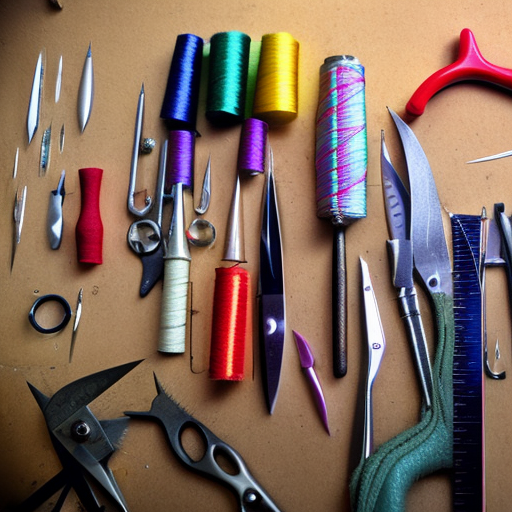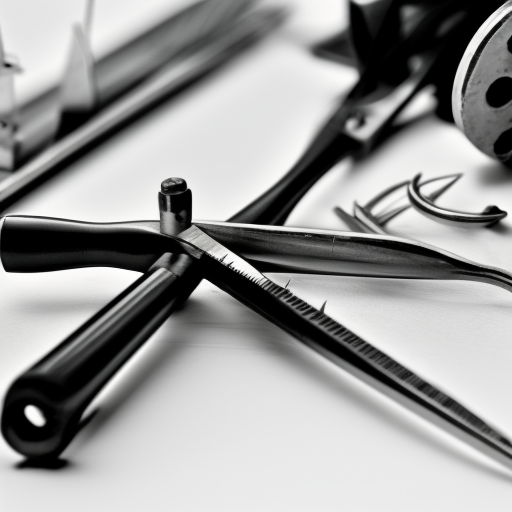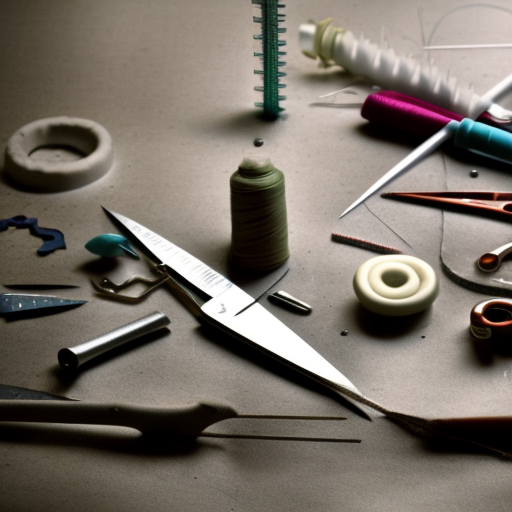Sewing thread is a crucial component in any sewing project. It is what holds your fabric pieces together and ensures the durability of your finished product. There are various types of sewing thread available in the market, each with its unique characteristics and purposes. In this material guide, we will explore the different thread materials and their best uses.
Cotton Thread
Cotton is the most common thread material used in sewing. It is natural, versatile and easily available. Cotton thread is suitable for most sewing projects, from hand sewing to machine sewing. It is ideal for general stitching, mending, and patchwork. Cotton thread comes in different weights (thickness) and can be used for both lightweight and heavyweight fabrics.
The main drawback of using cotton thread is that it tends to shrink when washed. This can cause puckering on the fabric, especially if it is tightly woven. It is also not as strong as other thread materials, making it unsuitable for heavy-duty projects or sewing with sheer or delicate fabrics.
Polyester Thread
Polyester thread is a synthetic thread that is strong, durable, and resistant to heat, wrinkles, and fading. It is a popular choice for sewing garments, home decor, and outdoor items. Polyester thread is also ideal for machine sewing, as it glides smoothly through the fabric without breaking or fraying. It is available in a variety of colors and weights, making it a versatile choice for different sewing projects.
One of the downsides of using polyester thread is that it has a lower melting point than some fabrics. This can be an issue when ironing or pressing your sewn items. It can also cause puckering on lightweight and delicate fabrics due to its stiffness.
Nylon Thread
Nylon thread is another synthetic thread commonly used in sewing. It is very strong, durable, and has a high melting point, making it suitable for heavy-duty projects and sewing with heat-sensitive fabrics like leather and vinyl. Nylon thread is also water-resistant, making it ideal for outdoor sewing projects that require waterproof seams.
However, nylon thread is not as flexible as cotton or polyester thread, which can cause it to break when used on stretchy or tightly woven fabrics. It is also not ideal for lightweight fabrics, as it can cause puckering and distort the fabric’s weave.
Silk Thread
Silk thread is a luxurious, natural thread made from silkworm cocoons. It is very smooth, lightweight, and has a natural elasticity, making it ideal for sewing delicate fabrics like silk, chiffon, and satin. Silk thread is also strong and can withstand high heat and tension, making it suitable for both hand and machine sewing.
The major downside of using silk thread is its high cost, making it less accessible for everyday sewing projects. It also tends to unravel when pulled too tightly, making it challenging to work with for beginners.
Wool Thread
Wool thread is a thick, woolen thread that is commonly used for embroidery or decorative topstitching. It comes in various weights and colors and adds texture and dimension to your sewing projects. Wool thread is also soft and pliable, making it suitable for working with lightweight fabrics like cotton and linen.
However, wool thread can be expensive, and it is not recommended for machine sewing as it can cause tension issues. It is also not ideal for heavy-duty sewing or sewing with stretchy fabrics, as it does not have enough strength to hold them together.
In Conclusion
Choosing the right thread material for your sewing project is essential to ensure its success and longevity. While there are many more thread materials available, the five mentioned above are the most commonly used. It is important to experiment and test different thread materials to find the one that best suits your sewing needs. Whether it is cotton, polyester, nylon, silk, or wool, using the correct thread will make all the difference in your final product.





Fabric types for every project!
Great guide! #SewingSpirit
#LoveSewing #SewingThread
Fantastic guide – no more stressing over what type of thread to use for each project! #SewWithConfidence #TheMoreYouKnow #SewingThread
So helpful! I’ll definitely refer to this guide for my future sewing projects! #SewingThread
Wonderful resource! This guide is full of important information that will make any sewing project easier. #ThreadingAlong #SewWithLove #SewingThread
This is an incredibly helpful guide – the perfect tool every sewer needs. #ThreadMaster #SewCrazy #SewingThread